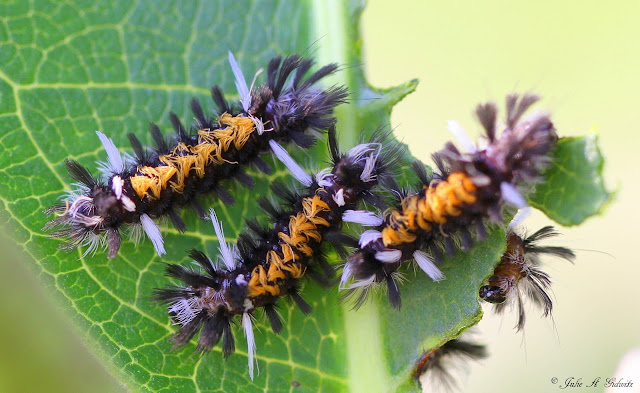Since acquiring the new macro lens, I have been viewing my surroundings in a very different manner. My walking gait has become slower in order to get a good look at the tiny wonders around me. A few of my senses seem to be keener, more intensified. I concentrate on small areas, rather than viewing a scene as a whole. I now focus in, as if my eyes are camera lenses. I peer at the undersides of leaves, the scaly bark of trees, the intricate centers of wildflowers, the bristly stems of plants, and the hollowed out crevices in old wooden fence posts. There is so much to see! I find myself listening with a sharpened ear to the interesting and varied sounds of insects that flutter clumsily amongst the leaves, or click, gurgle and burp noisily, calling for a mate. There is so much to hear! Below are some of the small wonders I have delighted in observing lately. All photos were taken on our country property. ~ Identification corrections are welcome ~
A stunning Acmon Blue Butterfly explores leafy ground cover
A vibrant red Nine-spotted Ladybug Beetle in a luscious sea of green
A pollen dusted Virescent Green Metallic Bee delights in a pretty Ironweed flower
This blooming goldenrod plant attracts a most radiant American Copper Butterfly
A boldly patterned Locust Borer scales a goldenrod plant
A Shamrock Orb Weaver Spider repairs its intricate web
The richly colored wings of a Question Mark Butterfly
This Yellow Woolly Bear Moth reminds me of a diva donning a luxurious white cape
To my naked eye, this Clavate Tortoise Beetle looked like a shred of forest debris ~ Upon focusing in with my macro lens, I saw it was an odd alien-like insect




































